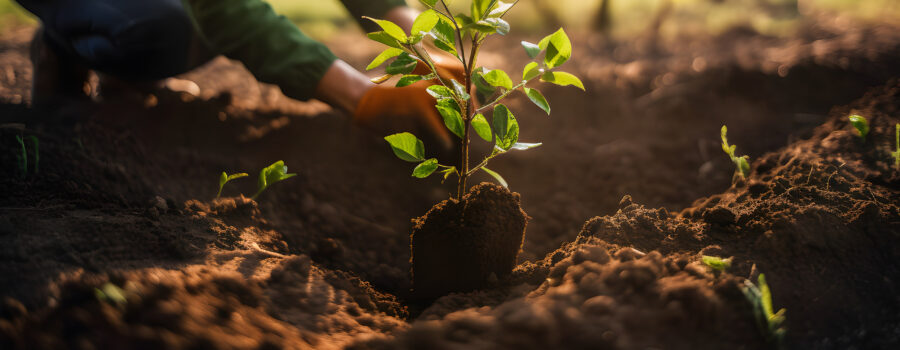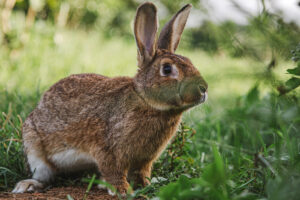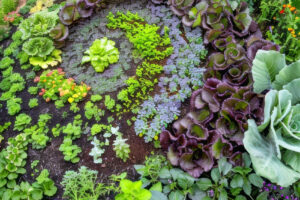What is all the fuss about food forests? What even makes something a food forest? Food forests are organic edible landscapes created in layers that mimic systems found in nature. To learn more, read the post What is a Food Forest? And in these times of economic uncertainty and food insecurity, it’s wise to take as much as we can of this process into our own hands.
Are they worth the work?
Perhaps you’ve wondered why anyone would want to invest time in developing a food forest, although with the current state of the world, I’m sure there are few left who aren’t questioning the reliability of our commercial food supply. I’ve found that a food forest — or forest garden — is not only a reliable source of healthy food, it’s a way to unwind and de-stress. It’s the best kind of therapy for life’s anxieties.
I received my permaculture design certification (www.permaculturewomen.com/laurenlynch) from Permaculture Women’s Guild, founded by Heather Jo Flores, who also began the Food Not Lawns movement in the ’90s and wrote a book by that title (www.foodnotlawns.com). So I’ve probably been indoctrinated more than most, and happily so! Explore their site to learn more.
But long before I’d heard of the movement, I had detested lawns. They are a pointless labor and a waste of resources. My kids were more inclined to play in puddles and in the street (bikes and skateboards) than on a grassy lawn. I wish I had developed food forests when they were young and passed on my love of tending plants. I encourage everyone to take advantage of any outdoor space at their disposal to grow fresh, healthy food—and inspire children to join in your efforts!

Interested in Growing a Grass-free Lawn?
Read about my experiments with grass alternatives.

Start Small—Start Now!
Whether or not you choose to hire a permaculture designer, there are important first steps you can take yourself to get things going.
The idea is to start small. See what works and what doesn’t. There will be some failures. For example, I really love starfruit. I dove right in and planted three varieties. I babied them, protected them from the cold. The first year I planted them, they did fine. Then in their second year in the ground, we had one night that dipped briefly to an unusually low (for this area) 23 degrees. I had wrapped them in frost cloth. When I went out the next morning to take off the coverings, they looked surprisingly good. I rejoiced! Too soon. I watered them carefully, but over the next couple of days, all the leaves shriveled and died on all three trees. I was crushed.
They did eventually produce suckers on the rootstock, but the grafted part was dead. Still, I don’t regret trying. Another year later, one of the suckers produced many blooms. I’ve been told by others that their suckers grew into tall, productive plants that provide delicious fruit. I have hope that my two surviving star fruit trees will do the same. If not, I can always attempt adding quality grafts in the future. Unless yard space is extremely limited, it is always worth a try.
Some plants thrive easily in my yard with almost no care: longevity spinach, sweet potatoes, rosemary, Mexican sunflowers, ginger, and comfrey. I don’t think I could kill them if I tried now that they’re established. I could walk away and not return for years, and I’m sure they’d be fine on their own. Others, like mint and root beer plant (Piper auritum), would take over if I let them. And even so, this is a good thing. We want our food forests to be as effortless as possible.
So, in your first year, go ahead and dream. Try your favorites. Take risks, experiment, and learn what works in your unique situation. Have fun with this!
Observation is Key
Invest as much time as possible in studying your site before you commit to a final design. Testing soil in various parts of your garden is a great way to start and will let you know where to focus early efforts in soil improvement — literally laying the groundwork for a healthy garden.
I observed our property closely for a full four seasons before I committed to a design. That said, there was also a lot of experimentation going on during that first year and “opportunities” to be flexible in what I hoped to achieve. I had a blank slate to start from and began by adding some fruit trees and trying out various perennial companions. I would test my favorite plants in various locations of the yard. Even in our modest half acre, there are enough soil variations, changing lighting conditions, and microclimates that a plant might do well in one area of my yard and not another, and often in ways that I would not have anticipated.
Properly preparing and improving the soil is key to future gardening success — an important step that should not be rushed or neglected. Florida soil is notoriously sandy and often devoid of life. Learn more in the article on Food Forest Site Prep for tips on improving soil in your yard.
If your soil is poor, you may need to focus on nitrogen-fixing pioneer plants like various legumes (peas and beans) first. My local favorites are pigeon peas (shrub), moringa (as a shrub or tree), and perennial peanut (ground cover). These plants enrich the soil, converting nitrogen from the atmosphere into a digestible compound that surrounding plants can use. When these plants are pruned, they release nitrogen into the soil.

Set Goals
Make a wish list of the plants you love to eat. Do your homework and research whether or not your desired plants will survive in your growing zone. If a plant is one zone off, you can always experiment with pushing those boundaries by growing them indoors or in a greenhouse, but focus on what will work first.
Sketch out a rough base map. This is important whether you’re working with a designer or doing it on your own. It’s a starting point. Know that things will change and be prepared to be flexible. Plan on putting the plants you will use frequently closest to the house (also known as zone one). Be sure to take sun/shade and water into consideration during this planning phase. Observing your yard for a full four seasons will also help in fine-tuning your plan. Keep a garden journal to record all your observations!
At this point, you can also experiment with growing some of the larger perennials from seed or cuttings if you enjoy propagation. Try to select low-maintenance options in the beginning. This will not only build confidence but will also allow you to focus on adding other layers later.
Finding a healthy balance of nitrogen is important—too much causes plants to focus on growth rather than flowers and fruits. Many of these plants are also great to “chop and drop,” piling the prunings on the ground around other plants as organic material that will feed your system as it breaks down.
Most of the Earth’s atmosphere is made up of nitrogen, but plants can’t take nitrogen from the air. Some nitrogen-fixing bacteria form symbiotic relationships with certain plants. They convert atmospheric nitrogen to nitrates that can be taken up by plants. Certain plants take nitrogen from the atmosphere and make it available in the soil.

Start with Perennials
Get perennials in the ground and established as soon as possible. Select a few trees that you’re excited about and love to eat. Layers can be added later.
Layers of perennials (or self-seeding annuals) in my zone 9a North Florida food forest:
- Tree Canopy (Overstory) – live oaks, pine
- Small Fruit Trees (Understory) – plums, persimmon, peaches, avocados, loquats, limes, lemons, kumquat, oranges,
- Shrubs – blueberries, elderberries, mulberries, pineapple guava, strawberry guava, lemon guava, Barbados cherry, surinam cherry, miracle fruit, chaste berry, pomegranate, Turk’s cap hibiscus, cranberry hibiscus, chaya tree spinach, katuk, teas
- Herbs – longevity spinach, sissoo spinach, echinacea, valerian, comfrey, wood sorrel, aloe, asparagus, rosemary,
- Vine – passionfruit, dragonfruit, coral honeysuckle
- Ground Cover – strawberries, carpet raspberry, mint, root beer plant, sweet potatoes, longevity spinach
- Root Layers – sweet potatoes, walking onions, galangal, various gingers, turmeric, taro, yacon
The canopy layer can create microclimates that will protect plants beneath. My live oaks shelter plants from wind, rain, and cold. My pine provides an excellent environment for acid-loving plants. I gather excess pine needles and tuck them in around blueberry and elderberry plants.
Once all the various perennials are in and established, add in annuals here and there, wherever there is an extra bit of space. Move them to new spots each year whenever possible.
Future posts will cover food forest development in greater detail, but this should give you a good idea of what to expect as you begin yours!
Copyright © 2025 Fruitful Food Forestry & Lauren Lynch. No portion of the original content on this website may be reproduced, in any language, without express written consent.









Leave a Reply
Your email is safe with us.